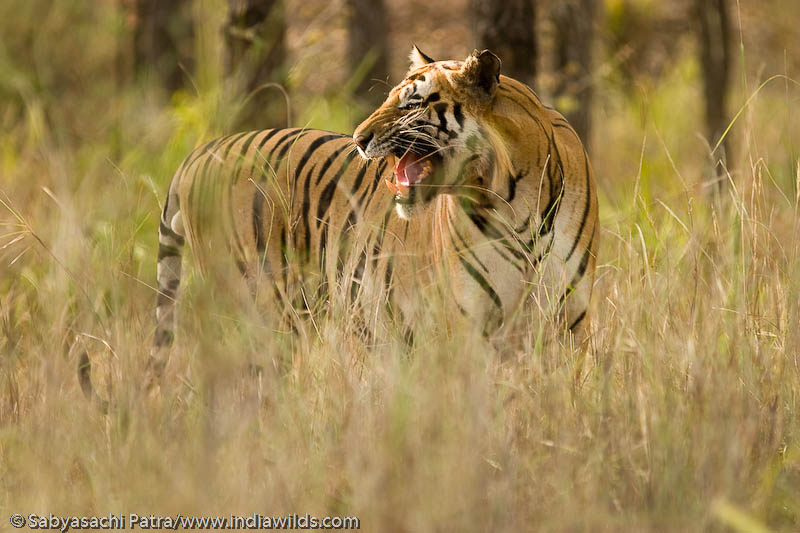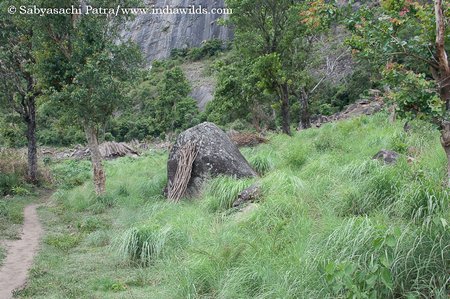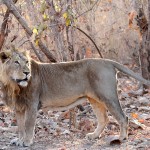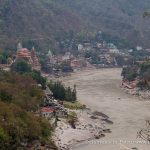IndiaWilds Newsletter Vol. 2 Issue I
Greetings!
It’s my pleasure to bring to you the IndiaWilds Newsletter Vol. 2, Issue 1. This newsletter contains some of the writings and thoughts of “Billy” Arjan Singh, and the updates on IndiaWilds.
Billy
With the passing away of “Billy” Arjan Singh, India has lost a great son. Instead of writing an obituary and eulogizing his good deeds – as is the standard practice – it would be better to learn from the triumphs and tribulations of this crusader.
In the foreword to Billy’s book “The LEGEND of the MANEATER”, John Aspinall writes “As a halfway house between man and wilderness, Tiger Haven could be compared to Kora on the Tana river in Kenya where George Adamson spent the last decade of his life. Adamson and Singh are unusual in that they crossed an emotional threshold and physically embraced the animals they protected. Both forged bonds with some of the creatures in their care. Let us all hope that Tiger Haven does not meet the fate of Kora – abandoned and forgotten within a few months of its founder’s heroic death at the hands of poachers”.
I think, it would be a tragedy to consider Tiger Haven as the only symbol of Billy and forget his crusade for the protection of wildlife and wilderness areas. I hope, with the passing of Billy, we don’t consign his wisdom – gleaned painstakingly over a period close to a century – to the cobwebs of history. Hence, I think it would be pertinent to relook at his key messages.
Strength of Character:
Few men have gone on to live long enough like Billy or as eventful a life as him. He was a remarkable man, not just because he relentlessly fought for conserving Dudhwa or raised his voice in support of ban on tiger shooting or for elephants mowed down by trains or in support of countless other conservation issues around the country; but because he had the strength of character to impassionately look back at his life and admit the mistakes and blunders that he had committed. It would be pertinent to quote him from his book “The LEGEND of the MANEATER”:
“A brief account of the activities of my elder brother runs through this narrative because I have attempted to show that the desire to kill compulsively is not an atavistic inheritance, but a deep complex of redirected aggression triggered by an insufficiency in the so-called sport hunter. In my own example, I see that a sickly childhood and a natural denial of talent led me to try proving myself in society. My brother, with his inborn abilities, was able to achieve competitive excellence unassisted. In contrast, I, whose development was retarded by sickness, had to rely on medical treatment, on physical exercise, and on sophisticated weaponry to overcome the powerful presence of animals as symbols of achievement. In every ‘sport hunter’, there probably lies an imbalance which he feels must be evened out in the society to which he belongs by the destruction of a symbol”.
Of course, Billy is not the only person whose strength of character has made an impression in me. I remember, Dr. AJT Johnsingh had mentioned in his book Field Days that he had once fired a tranquilizer gun at an elephant. The elephant, which was later discovered to be pregnant, fell on a ditch and died. How many researchers can openly admit death of mega fauna like tigers and elephants due to tranquilisation? Certainly, the world would be a better place, if each one of us can look at our own insufficiencies and the blunders committed in the past.
On the tiger habitat:
We are more or less aware that our forest cover has shrunk. However, the extent of destruction of our pristine wilderness areas can be gauged from Billy’s perspective, as he has seen it being destroyed since the early 1900s. Quoting Billy on tiger habitat destruction and its impact on the tiger:
“Forest habitat was unlimited, and the growing demands of the human population had not attained the degree of exploitation by which entire ecosystems were altered. Extensive buffer areas existed between forest and habitation. Gradually, and then with a frightening finality, tiger habitat has shrunk, buffer zones have disappeared, a massive exploitation has degraded the forests to an irreparable travesty of their former luxuriance, and the human has returned to live in the forests. With habitat destruction and degradation, and the commercial poaching of prey species, the life-style of the tiger has compulsively altered”.
“The end of the Second World War saw the beginning of massive reclamation schemes in Nepal, as well as land hunger and timber exploitation after the attainment of Independence by India. The Nepal habitat has virtually vanished, except for small and fragmented Reserves: over-exploitation has degraded the remaining forests, and the advance of agriculture has constricted the habitat, and now no buffer areas remain”.
Habitat destruction and Impact on the tiger:
Billy Speaks:
“Tigers have been crowded into a last bastion of refuge, where they are forced to live cheek by jowl with the human invader, and unless we can rationalize their existence they will soon disappear. From a selective occupancy far from the human presence, the tiger has been forced into a baleful coexistence where no expansion of space is possible, and inbreeding will soon exterminate the resident populations, already weakened by other pressures. It is against this background that we must view measures aimed at preserving the tiger”.
Billy’s words habitat destruction and its impact on the tiger rings true even in Corbett National Park, the place where Project Tiger was launched. For further details, you may refer to this discussion:
http://www.indiawilds.com/forums/showthread.php?t=2818
It is a fact that inbreeding has become the norm in some of our celebrated Tiger Reserves. There is no contiguity among the various sanctuaries and tiger reserves. Our sanctuaries and tiger reserves have become oases amidst the concrete jungles. No tiger can come from the surrounding forests to repopulate when there is a vacancy due to the death of a tiger in some of our tiger reserves. So the only way to repopulate these isolated tiger reserves and sanctuaries is by forcibly translocating a tiger. It is not of course, without its vagaries. For further discussions:
http://www.indiawilds.com/forums/showthread.php?t=2234
It is time that we seriously consider reestablishing corridors between our tiger reserves and sanctuaries.
Need for Inviolate Spaces:
“Billy” Arjan Singh has seen first hand, the impact of destruction of the tiger habitat by resetllers. This destruction of the tiger habitat had brought those resetllers in direct conflict with the tiger, eventually the later being branded as man-eater. Billy rightly believes that there is a need for inviolate spaces for the tiger. Quoting Billy:
“It is essential to appreciate that man cannot share space with the tiger for any length of time, for eventually a familiarity will evolve into the acceptance of man as a prey species, and nature’s safety valve will become infructuous. Therefore a tiger’s habitat, and the ecosystem which he represents, must remain inviolate. Wildlife areas must be rationalized for the tiger to exist in niches that are separate from the human population, for once a compromise is accepted it is the beginning of the process of attrition for the microcosm of wildlife, for a compromise is only possible between equals. The human must forever remain an intruder into the wildlife areas. Whether this is possible with a developing and surging democracy will depend on whether the tiger is going to survive into the foreseeable future. The recent proposal of Project Tiger to have multiple use areas occupied by both man and tiger is a regressive measure. A rethinking is essential if the tiger has to be preserved for the future, and it is unfortunate that the Project appears to be losing direction. Man and tiger cannot share space”.
Also, man and tiger cannot share space because tiger is secretive by nature. It needs an inviolate secluded space where it can give birth to its cubs who are immobile. This reduces the chance of the small cubs being noticed by other predators. It is indeed rare to find a tigress keeping her cubs in an area visited by humans and even cattle. In such cases, the tiger can stop breeding.
The tragedy that is unfolded when man penetrates into the jungle or when manmade roads and rail tracks cut across forests can be seen here:
http://www.indiawilds.com/forums/showthread.php?t=2746
Siltation and Death of Mega Dams:
“�our denuded and exploited hillsides pour silt into massive dams built in a megalomaniacal splurge, choking their utility. We are felling forests, displacing age-old civilizations, and rendering their future both destructive and infructuous. The ecological crisis whereby cultivation and civilization are devastated by floods is sought to be remedied not by damming the errant river, but by tree plantations to hold the collapsing hills – not because of any desire to recompense nature for the piracy we have committed, but because of a terror of the finality of the reprisals that nature has in store”.
Written nearly two decades back, Billy’s above words are true even today. A couple of days back, India and Bangladesh signed a few agreements and one of them was regarding India’s help in desilting the dams in Bangladesh. Unfortunately, we are still not focusing on the root cause of siltation and our mega dams continue being rendered ineffective in a few years. I hope, the wisdom of such a great son of Mother India is not forgotten in haste.
On Culling:
“A wildlife management ploy, which is of immense harm to wildlife, is culling. Managers maintain this is essential in certain cases to maintain the biomass population in relation to the habitat available, and in preventing population pressures from degrading the habitat. In other words, the human has arrogated to himself the task of adjusting the wildlife population to the forage available in a given area. In these days of habitat reclamation for human use, this places an unwarranted onus on the human species, which, as we have already seen, is singularly unqualified to deal with population control”.
“Wild animals are eminently adaptable, and if certain ungulates overgraze the forage they have been used to, they will opt for other forms of life maintenance. Browsers may become grazers, and other sources may be discovered. The hardground swampdeer of Madhya Pradesh are genetically the same as the marsh inhabitants of Kaziranga. The sambhar, supposed to be solitary inhabitants of dense forest, now gregariously feed on water plants in Ranthambore, like the barasingha. Wild elephants propagate trees from the seed pods they ingest. When they cannot strip bark from trees, they switch to a diet of grass. Yet in Africa it is maintained that they have destroyed and are destroying their habitat, and should be culled for their own good. This reprehensible idea is implemented by the slaughter of entire herds of Zimbabwe, and is a crime against laws of the universe as ordained by nature. These insensate massacres are a greater offence than that of a country like Japan, which may illegally smuggle ivory, but those artisans have never seen an elephant”.
Infact, recent research suggests that culling has a huge negative impact on the wildlife. The errant behavior of adolescent elephants in killing rhinos, tearing down huge trees etc in Africa was found to be due to the trauma they suffered when adult elephants from their herd were shot dead. In the US it has been reported that when adult cougars were killed, their place is taken by young ones. Whereas the adults had lived in close proximity of humans and have rarely been observed, the young ones have been attacking humans. Perhaps, the young ones need a calming influence and guidance of the adults in their growth stage as we certainly do.
I agree that the human species having failed to control its population explosion, is perhaps the most unqualified among all the species on earth to talk about population control. This brings to the mind, are we qualified to play God?
Anthropomorphism:
Our understanding of nature is limited. Every other day, we learn something new from nature. In this context is it right to attribute an economic value to nature? I agree with Billy that instead of looking at every species from a monetary aspect, it is perhaps necessary to replace it with the emotive concept of the conservationist. Quoting Billy’s views on the need for emotion and his views on anthropomorphism:
“Considering the changed circumstances in wildlife conservation, anthropomorphism must give way to a more emotional outlook in which animal behavior should be equated with human reactions, for conservation has already in many cases given place to preservation. Wildlife can only be saved by a crusade. The rigid dogma of the scientist must be replaced by the emotive concept of the conservationist”.
“Anthropomorphism is an archaic and invidious concept by which the human has aspired not only to apotheosis, but has conspired to distance himself from the animal world. The human has a pregnancy, the animal has a gestation. We give birth, the animal litters. The animal trait is brutality, man is distinguished by humanity. In fact, animals merely differ from the human a s regards the intelligence quotient, and even here the great apes, dolphins, and the whales have primary intellects. It is only because man wishes to dominate and exploit the natural world that he has imposed these euphemistic distinctions on the bodily functions of animals which are essentially the same as his own, and thereby transformed killing them into a pastime. A denial of animal rights terms the deliberate slaughter of other animal forms as hunting, whereas that of one human by another is murder. This false principle has contributed to our regarding the animal as a lesser breed of creation, which is really only so according to evanescent human standards and not the eternal and evolutionary one which is the eventual touchstone”.
Is it right in our part to assume the role of God?
Message to Conservationists:
This can be considered as a message for the conservationists not to abandon the cause. Quoting Billy:
“It is tragic for me that, at the end of my life, I have fought a battle which can only end in defeat; yet I must soldier on. If I abandon the cause, I could never live with myself. Starting as a compulsive killer, I have run the entire gamut: conscientious evaluator to conservationist, preservationist, and, ultimately, crusader. I have the satisfying feeling that, inspite of eventual failure, tempered in nature’s crucible; I am a more civilized person than when I began”.
I hope, Billy’s wisdom will serve as a guiding beacon for us to conserve the last remaining tracts of wilderness and wildlife left in this beautiful country of ours.
IndiaWilds Forums Updates:
Wildlife tourism ought to be non-consumptive ie. tourism should not have any long term impact on the wilderness areas and wildlife and nothing should be removed from the area. However, wildlife tourism in India is far from non-consumptive and has impact on wildlife. Most of Our forest officials today are more busy in managing the tourists than their primary duty of patrolling our forests and taking steps for ecologically sound management practices. Today, the eco tourism has reached such ugly proportions that it threatens the welfare of the wildlife. For eg: the proposal to introduce night safari in Bannerghatta is one such idea. You may please refer to the details here and raise your voice:
http://www.indiawilds.com/forums/showthread.php?t=2799
Wildlife Photography:
I am sharing a few links to some of the fine images shared by our members:
What is not crossing by Mohan Raj: An interesting perspective
http://www.indiawilds.com/forums/showthread.php?t=2780
Curious by Praveen P Mohandas
http://www.indiawilds.com/forums/showthread.php?t=2575
Great Crested Grebe by Ramesh Anantharaman
http://www.indiawilds.com/forums/showthread.php?t=2721
Praveen P Mohandas
http://www.indiawilds.com/forums/showthread.php?t=2692
Common Sergeant by Dr Hari Venkatesh K R
http://www.indiawilds.com/forums/showthread.php?t=2667
A string of Pearls by Bibhav Behera
http://www.indiawilds.com/forums/showthread.php?t=2554
Jog Falls by Dr Hari Venkatesh K R
http://www.indiawilds.com/forums/showthread.php?t=2717
Look forward to your inputs and your support in preserving the last tracts of wilderness and wildlife left in this beautiful country. For other interesting articles and photographs please check:
http://www.indiawilds.com/forums/
Regards,
Sabyasachi Patra
www.indiawilds.com
Profile: http://www.indiawilds.com/profile.htm
Contact: http://www.indiawilds.com/contact%20us.htm
Twitter: indiawilds
Facebook: indiawilds
(Circulated in January 2010)
- GoPro Hero 12 Black - 6 September,2023
- Leopards: The Last Stand - 2 July,2023
- Drifting in the Waters of Sundarbans - 26 March,2023










Leave a Reply